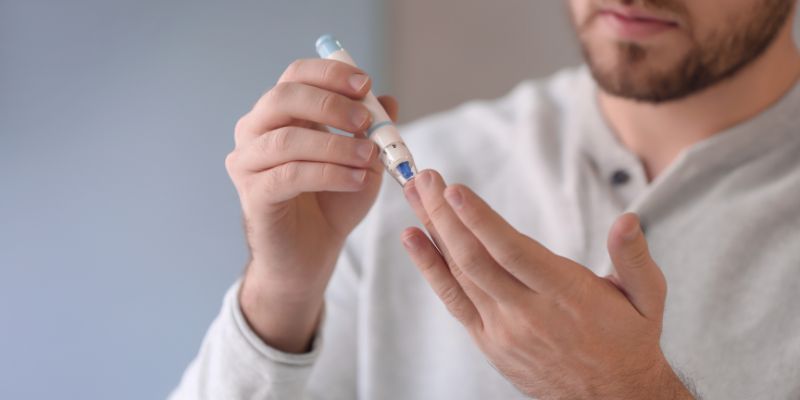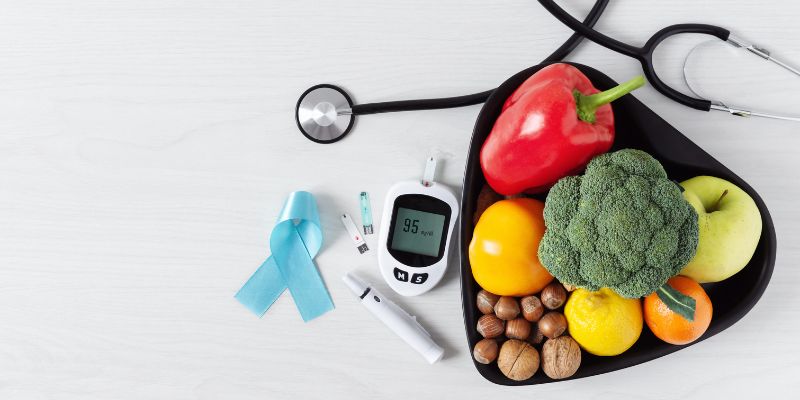Diabetes In Men: Common Symptoms, Causes, Treatment, and More
Diabetes is a condition in which the body refuses to manage blood sugar levels or when the blood sugar level (glucose) becomes too high. It happens when the pancreas gives up on regulating or doesn't make enough or any insulin at all. It eventually triggers a chain reaction in which the body doesn't respond to its effects properly. Therefore, diabetes is termed a silent killer. It can happen to anyone regardless of age, ethnicity, geographical location, and body type.
Out of all the diabetes conditions or forms, type-2 diabetes is the most common one. Fortunately, it is manageable today by implementing a healthy lifestyle to prevent complications. If you are also suffering from diabetes or suspect that you can be, find here all the symptoms and causes of diabetes in men. Also, you can learn how this condition can be controlled or reversed with proper medications and lifestyle changes.

Understanding Diabetes in Men
Your body's primary or go-to energy source mainly comes from carbohydrates, which are present in your food and drinks. Your body then decomposes them, and your bloodstream acts like a carrier to reach glucose to every cell for energy. However, the key to carrying glucose to each cell is insulin, a hormone the pancreas produces. Suppose your pancreas is not working properly or unable to generate enough insulin.
In that case, your blood sugar level (glucose) accumulates in your bloodstream, causing hyperglycemia or higher blood sugar. If this condition persists for a long time, it can cause other serious health issues, such as heart disease, eye issues, and nerve damage. The common symptoms of having diabetes include increased thirst, frequent urination, especially at night, and feeling hungry more than ever. However, some unique symptoms are associated with men, including a gradual muscle mass decrease.

Common Symptoms of Diabetes in Men
It is estimated that between 13 and 17 percent of men have diabetes. Diabetes in men can lead to some serious health complications, from heart disease to a reduction in muscle mass. However, the condition and symptoms of having diabetes are similar across genders, like damage to nerves and blood vessels. Before understanding how to treat this condition, let's look over the common symptoms of diabetes in men here:
- Muscle Mass Reduction: Consistently high blood sugar levels trigger the breakdown of body muscles. The body feeds on muscle mass to get its source of fat and energy. It is more common in men with type-1 diabetes. The body's dependency on muscles to supply enough energy results in muscle weakness and reduced strength.
Causes of Diabetes
Excessive or higher glucose values in the bloodstream cause diabetes, regardless of the type. The range or amount of glucose in the bloodstream determines the type of diabetes; the higher glucose levels differ from person to person, depending on multiple reasons. Here are some common causes of diabetes in men.
- Insulin Resistance: Insulin resistance leads to type-2 diabetes; it happens when your body cells, whether muscle cells, liver cells, or fat cells, don't respond normally or react properly to insulin. The main contributors to insulin resistance are obesity, lack of physical activity, poor dietary habits, hormonal imbalance, medications, and genetics.
- Autoimmune Disease is a condition in which the immune system starts attacking the insulin-producing cells in the pancreas. It leads to type-1 diabetes and LADA.
- Pancreatic Damage: Any physical damage to your pancreas, whether from an outside source or due to a certain condition, while performing surgery or suffering an injury can be the cause. All of these conditions impact the functioning of the pancreas, making it hard to produce insulin; a condition like this triggers type-3 diabetes.
Similarly, certain types of genetic mutations in your body also cause diabetes, and the use of long-term medication to treat a certain condition.
Treatment for Diabetes
The type of diabetes and its intensity varies from person to person, making it a complicated condition requiring more of an individualized solution than a general one. The main processes to manage it include
- Blood sugar monitoring helps you to monitor and manage your diabetes daily.
- Oral medications prove beneficial in managing blood sugar levels in people who can still produce some insulin.
- Insulin intake through injectables helps people to manage their sugar level with type-1 or sometimes type-2 diabetes.
- A good diet is vital for managing and controlling blood sugar levels; a healthy diet plan almost does half the work to maintain them.
- Lastly, physical activity or exercise increases insulin sensitivity and helps reduce insulin resistance.
Conclusion:
Diabetes impacts your life in many ways, but you can manage and control it with consistent care and diligence. You can live a healthy and happy life, but it involves complete cooperation and effort from your side, your healthcare professional, friends, and family. You don't need to be afraid, as modern technologies help you manage it properly on time. You only need the grit and will to fight this condition. Diabetes is completely manageable and controllable today.












